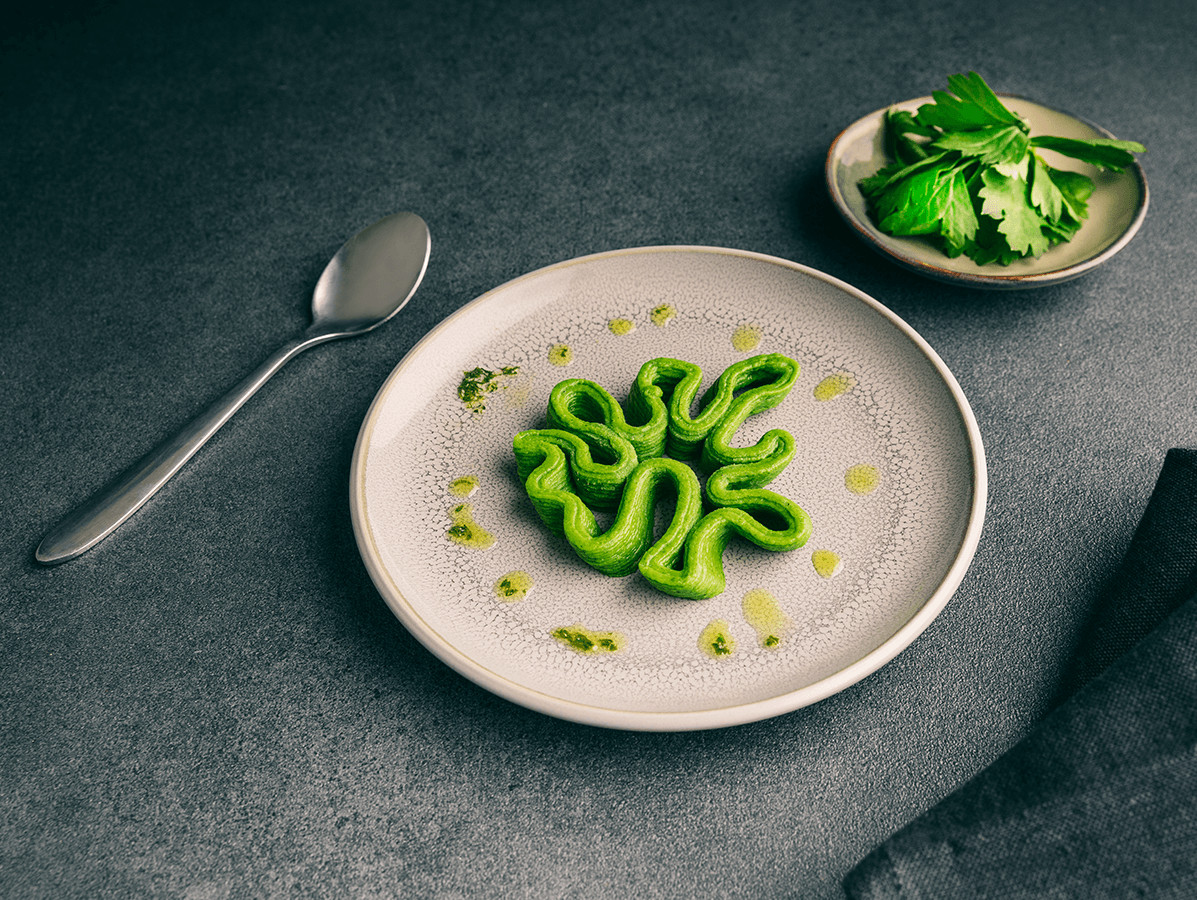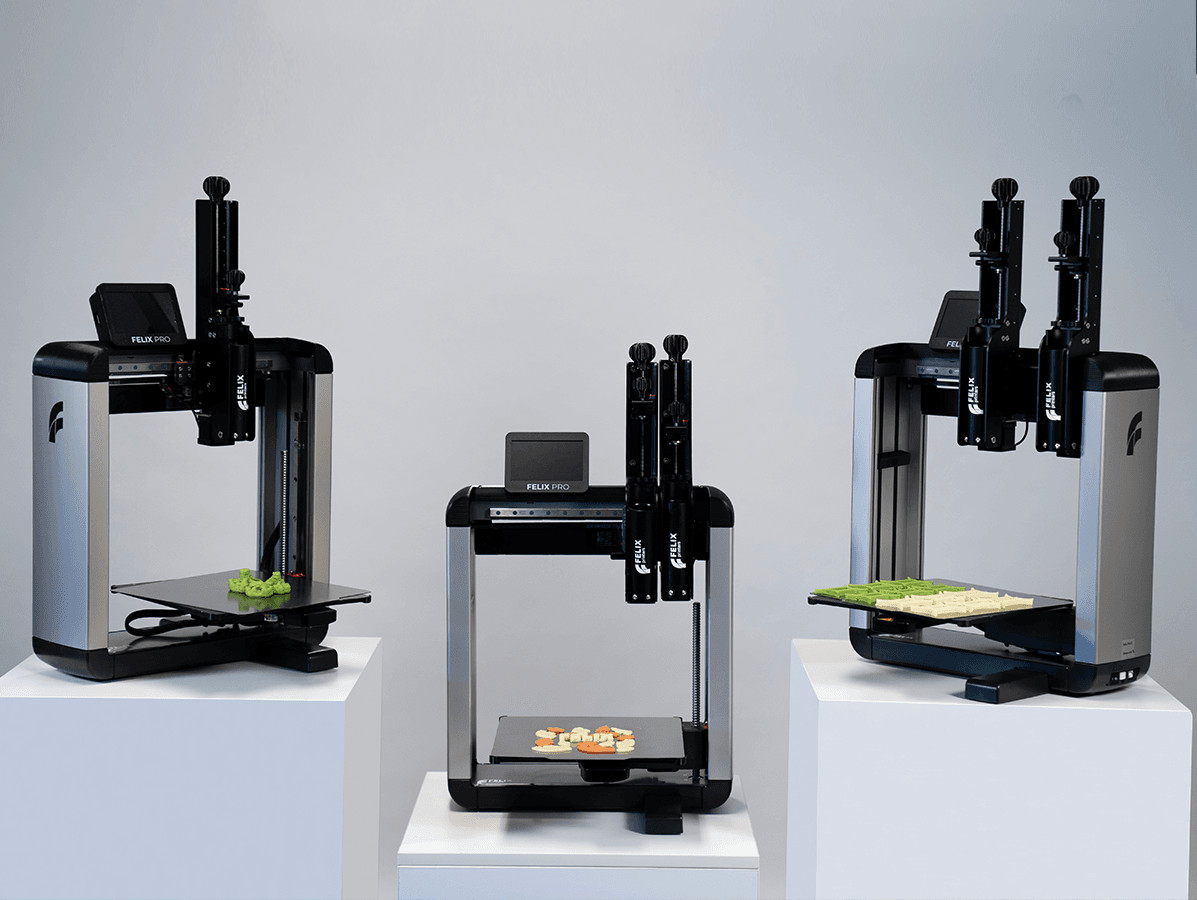
Experiments with 3D food printing have been going on for years in the catering and food industries. This is paying off. The technique finally seems to fulfil its promise. However, the development of suitable pastes and increasing the speed of printing remain important points of attention.
'3D food printing has an immediate problem-solving potential'
The promise: '3D food printing offers the food industry, the (wholesale) kitchen and the catering industry many new possibilities'. By building up a product or a dish layer by layer, an extensive range of shapes and structures is possible, giving food preparation a spectacular new way of operating. In addition to great creative freedom, 3D printing offers great opportunities for increasing productivity and efficiency in food preparation.
3D food printing hardly differs from other forms of 3D printing that are already very common. "It starts with the development of a 3D model of the product to be printed. Then, with the help of so-called slicing software, the layers from which the product is to be constructed are defined. The programme is then loaded into the food printer, which makes the product completely self-sufficient," explains Guillaume Feliksdal, CEO of the Dutch company FELIXprinters. They have been making 3D filament printers for plastic products for more than ten years. Recently, they introduced a series of three 3D food printers to the market; especially developed for restaurants, kitchens and hobby cooks. The series consists of a 3D printer with one print head that can accurately build the pasta in any desired shape and up to a height of 17 centimetres; a printer with two interchangeable print heads that can be filled with two different kinds of pasta; and a printer where the two print heads are mounted in a fixed position. These print simultaneously, which doubles the printing capacity.
Guillaume: "Most 3D food printers are extrusion printers. They push the paste through a nozzle. The speed depends on the design, the viscosity of the paste and the width of the print nozzle, which varies from 1 to 3 millimetres. The more fluid the paste is and the wider the nozzle, the higher the print speed. The pastes must have a certain solidity to prevent the structure from collapsing after printing. The ideal viscosity of the paste is between 50 and 1,000 Pascal seconds (Pa.s). Our Single Head printer can print about 100 cc of paste in 20 minutes. The Twin Head prints 12 identical dishes in 20 minutes." Nice for the catering industry, but not yet suitable for the food industry. That is why he is working on the development of a printer with more nozzles and an automatic supply of pasta to increase the production speed.

Gastronology develops 3D printed dishes for people with swallowing problems (dysphagia), children who do not eat enough vegetables and oncology patients who have a different taste experience due to their treatment. The development of suitable pastes is not yet so simple, says SVH Master Chef Eugène Swalen, who works for this company. He has been working for almost a year on developing a puree based on cauliflower. "We have now developed a number of vegetable dishes, 95% of which consist of fresh produce. The purees have to meet many requirements. They must be easy to print and freeze. They must not contain any pieces or lose their shape when defrosted or heated in the microwave, steam oven or mealbutler. They may not have a layer of skin on them or stick in the patient's mouth", sums up Eugène. "And as if that were not difficult enough, the moisture content of vegetables, for example, can vary per season or depending on the country of origin, so that the recipe has to be constantly adjusted."
Colleague Peter Nieuwkerk, who has been working with a 3D food printer from FELIXprinters for some time now, has been working on the other challenge: increasing the printing speed. He has developed a technology that has increased it enormously: "In 2017, the print speed was 2 grams per nozzle per minute. Currently, we are already at about 340 grams per nozzle. As a result, the industrial 3D food printer we are building can process about 16 kilograms of puree per minute."
PB Leiner, which is part of the Tessenderlo Group, is also working with FELIXprinters on the development of printable food: based on gelatine, a natural binding agent that is also suitable for pastas and vegetable purees, for example. Fernanda Condi de Godoi, who researches the application of gelatine at the Tessenderlo Innovation Centre, points out that food and eating are culturally determined and that changes in eating habits are very sensitive. "There is still some work to be done to improve acceptance, because consumers see 3D printed food as artificial food," she says. "So it will take some time before 3D food printing will fundamentally change the way we all eat. But 3D food printing does have an immediate problem-solving potential: to provide attractive alternatives to those with dietary and texture restrictions, to develop new dishes and exciting food designs."
Source: Vakblad Voedingsindustrie 2022